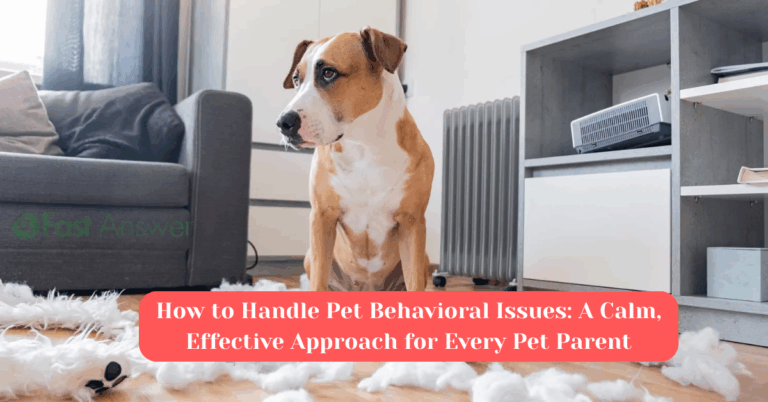Senior Pet Care Tips for Aging Animals: Support Their Golden Years with Compassion
As pets grow older, their needs begin to shift physically, emotionally, and nutritionally. Senior pet care isn’t just about managing age-related issues; it’s about enhancing quality of life and maintaining comfort and connection through every stage. Whether you’re caring for a greying dog, a slower-moving cat, or a senior rabbit, giving them the right attention can help them thrive well into their later years. This guide offers essential senior pet care tips for aging animals, designed for pet owners who want to provide thoughtful, proactive support during their beloved companion’s golden years.
Adjust Nutrition to Match Their Slower Metabolism
Aging animals often need fewer calories but more targeted nutrition. Their metabolism slows down, but their need for joint support, digestive balance, and immune protection increases. Senior pet foods typically offer lower fat, higher fiber, and added supplements like glucosamine, omega-3s, and antioxidants to support aging joints and reduce inflammation.
Wet food or softened kibble may also be easier for pets with dental issues or decreased appetite. Always consult your veterinarian before making dietary changes, especially if your pet has chronic conditions like kidney disease or arthritis. The right nutrition plays a critical role in keeping your senior pet comfortable and energized.
Schedule More Frequent Vet Visits for Early Detection
Older pets are more prone to health concerns, from arthritis and dental disease to heart issues and cancer. While yearly vet visits may have been sufficient during their younger years, senior pets often benefit from biannual check-ups. These exams help catch subtle changes early—before symptoms become severe.
Your vet may recommend bloodwork, urinalysis, or x-rays to monitor internal health and detect age-related changes. Early intervention can significantly improve prognosis and comfort. Even if your pet seems fine, these routine checks provide peace of mind and allow you to adjust care proactively.
Create a Comfortable and Safe Living Environment
As pets age, mobility and sensory changes become more apparent. You may notice difficulty jumping onto furniture, hesitation on stairs, or confusion in unfamiliar surroundings. Small changes around the house can make a big difference: add non-slip rugs, ramps, or orthopedic beds to support joints and reduce the risk of injury.
Make litter boxes, food, and water bowls easily accessible. Keep your pet’s environment predictable to reduce anxiety caused by cognitive decline. If your pet has vision or hearing loss, avoid rearranging furniture and use scent cues or gentle vibrations to communicate. These adaptations allow your pet to move confidently and rest comfortably.
Support Their Mental and Emotional Well-Being
Mental stimulation remains important for senior pets, even as their physical activity slows down. Engage your older animal with puzzle toys, short training sessions, or gentle enrichment like scent games or treat hides. These activities keep their brain active and help prevent cognitive dysfunction.
Emotional support is just as vital. Senior pets may experience anxiety or confusion, especially in the evenings a condition known as sundowning in pets. Maintain a calm, consistent routine with plenty of affection and reassurance. Your presence, patience, and gentle touch are powerful tools in helping them feel safe and loved.
Watch for Subtle Signs of Pain or Discomfort
Aging pets are experts at hiding pain. What looks like “slowing down” could be a sign of joint discomfort, muscle loss, or an underlying condition. Watch for subtle changes: reluctance to climb stairs, decreased appetite, vocalizing when touched, excessive licking, or behavioral shifts like withdrawal or restlessness.
If you notice any of these signs, consult your vet about pain management options. Many senior-friendly treatments from anti-inflammatories to acupuncture or laser therapy can significantly improve comfort and mobility. Never assume signs of aging are simply “part of getting old.” You can help them feel better.
FAQ
1. At what age is a pet considered a senior?
It varies by species and breed. Most dogs and cats are considered senior around age 7, though large breeds may reach that stage earlier.
2. How often should senior pets see the vet?
Twice a year is generally recommended for early detection of age-related issues and more responsive care planning.
3. Should I change my pet’s food as they age?
Yes. Senior-specific formulas offer nutritional support tailored to aging bodies, including joint care and easier digestibility.
4. Can senior pets still exercise?
Absolutely. Gentle, regular activity is important. Tailor it to their mobility and comfort level to prevent injury and support health.
5. How do I know if my senior pet is in pain?
Look for subtle signs like limping, restlessness, irritability, or decreased interest in food or play. Always consult a vet for evaluation.




